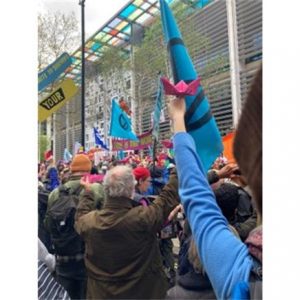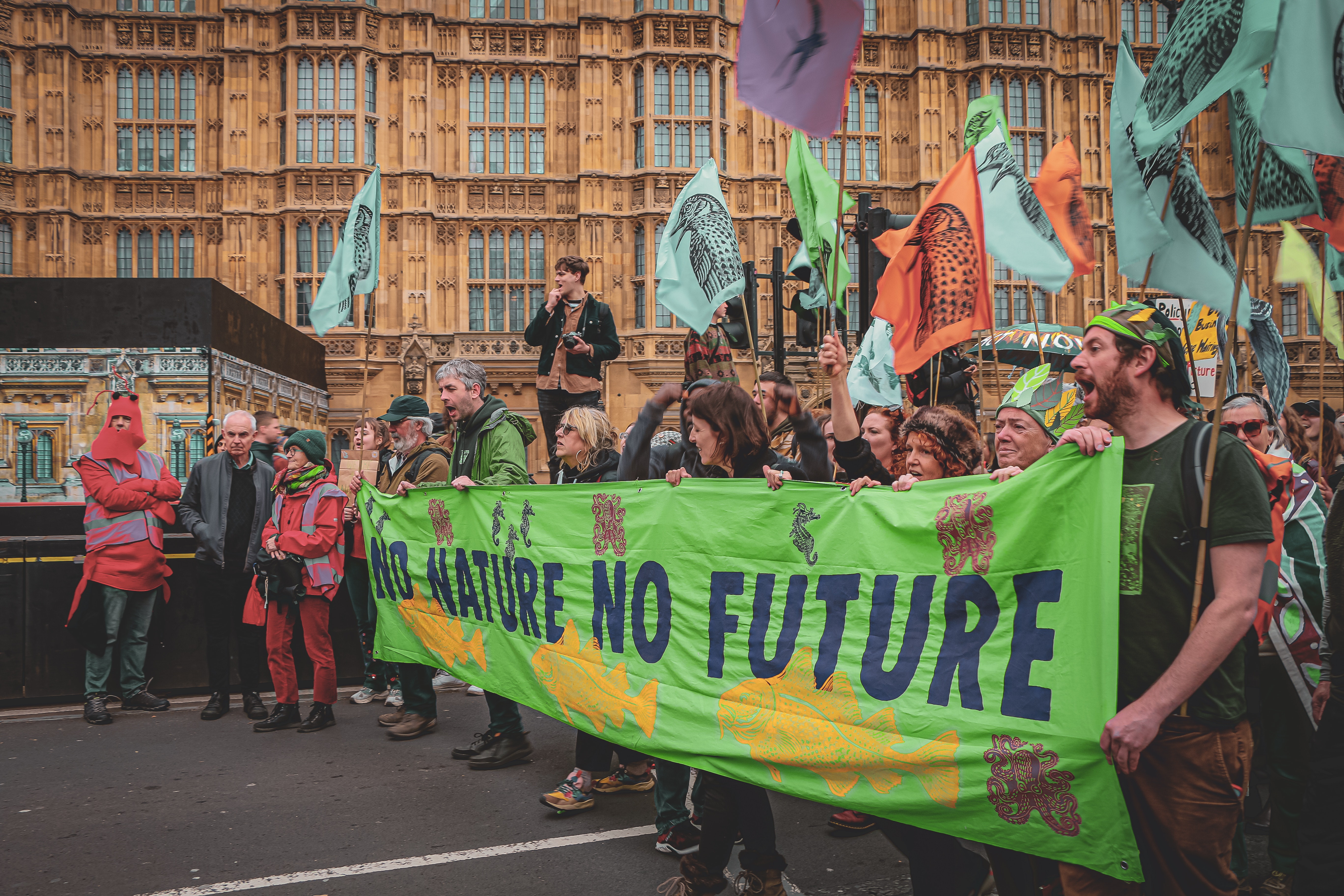The Big One – Extinction Rebellion
Rosie in year 11 discusses her experience at The Big One, an Extinction Rebellion protest and how it was overlooked by the media.
Over 60,000 people participated in an Extinction Rebellion demonstration in London called “The Big One” from April 21st to 24th. However, when you check the news for it, a temporary fairground ride closure in Blackpool under the same name appears first. So how did such an important protest slip under the public’s radar?
This 4-day demonstration demanded for social, economic, and environmental justice. It was run in collaboration with hundreds of charities and organisations from Greenpeace to Fairtrade and Patagonia. My dad and I grabbed our origami sail boats, jumped on a train, and joined the protestors on Sunday afternoon.
The demonstration
On arrival at Westminster, we were a little disappointed. On the surface the stalls were bedraggled and neglected in the rain. To contrast, the London Marathon was taking place right next door, but as we wandered in further in, the atmosphere perked up. There was live music spotted about, celebrating the environment and challenging injustices. There was also hot vegan food available for free or donation. These features of a protest are often overlooked by the media but are essential to create a community and to demonstrate that it is possible to practice what XR preaches.
Rather than just picketing, there were workshops. One event that stood out to me was the “Corporate Courts vs Climate Justice” workshop run by the organisation Global Justice Now. This discussion focused on how international companies use trade deals to exploit the environment. These trade deals contain secretive tribunals that allow a foreign corporation to sue the government of a country that it operates in for disrupting their business by introducing new regulations and laws. As a result, countries are reticent to introduce environmental protections for fear of being sued. For example, the Pakistani government was fined over $5 billion by copper and gold mining companies, this was about the same as the health budget for the country. The Pakistani government was trying to protect the environment by preventing the mines from expanding and got sued as a result. I found this workshop very informative, but more importantly it was constructive as the speaker specified effective ways to help challenge these sorts of injustices.


The last event of the day that we participated in was the 20,000 Small Boats Action protest. We were marching against the Illegal Migration Act and in solidarity with refugees and climate migrants. Every protester had their own pink origami boat with a personalised letter to Suella Braverman or their MP. The march ended at the Home Office where the boats were launched into the moat that surrounds the building. Several activists spoke including a young Algerian asylum speaker who came to the UK on a small boat in December. This issue can sometimes feel distant but hearing him speak was moving and made it personal.
Final Thoughts
In contrast to other Extinction Rebellion protests, The Big One aimed not to be disruptive. XR have taken a new approach in 2023 to “prioritize attendance over arrests and relationships over roadblocks”. This made the protest more palatable for a wider range of audiences. However, they didn’t receive the media coverage associated with more disruptive protests. These controversial demonstrations such as the ‘soup throwers’ have been widely ridiculed and can undermine the climate change movement – but they successfully cause a stir and start conversations around our priorities. I certainly learnt a lot at The Big One. It’s hard to say which strategy is more effective.

